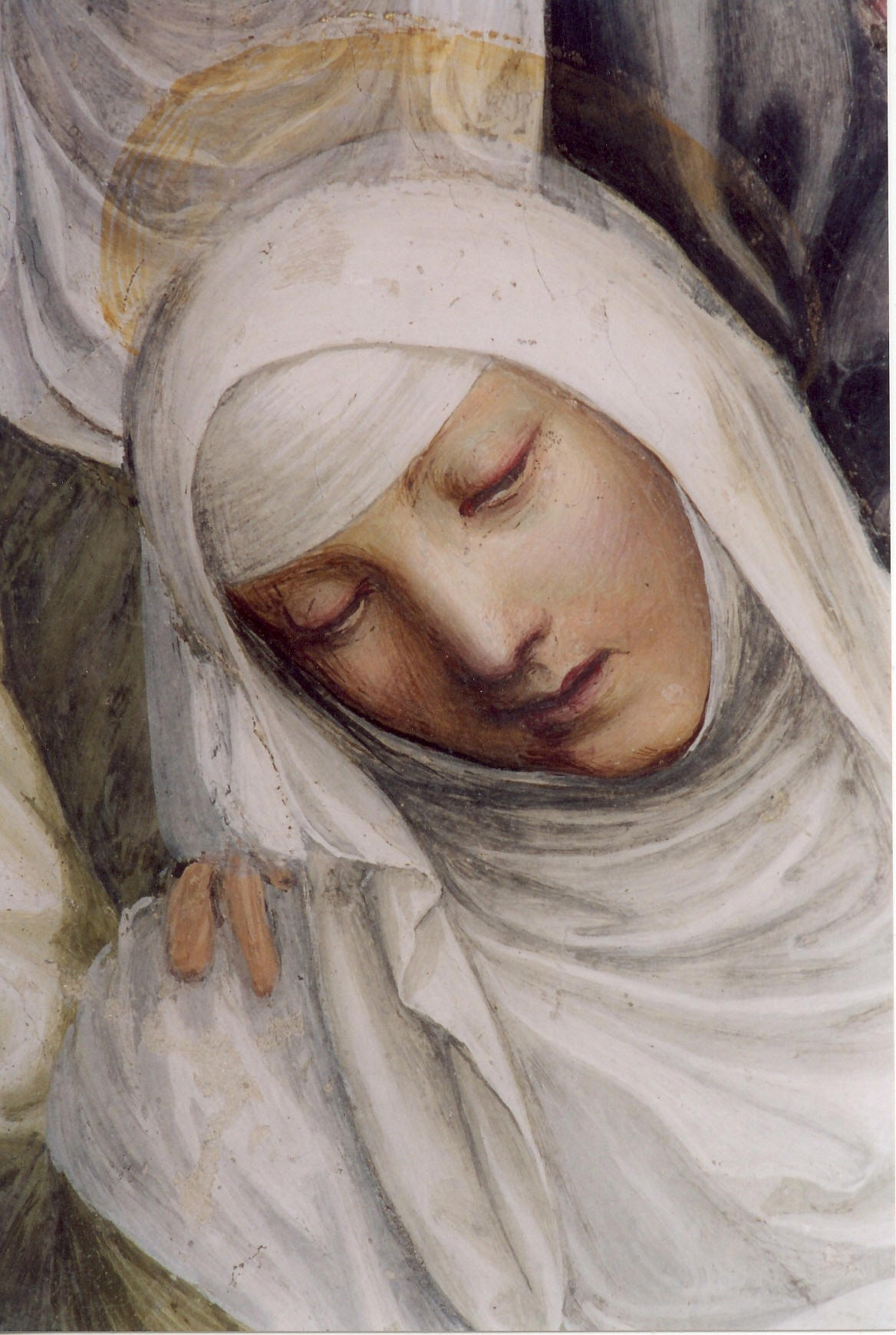The
following is Kenelm Foster's entry on Catherine of Siena in The
Westminster Dictionary of Christian Spirituality edited by G. Wakefield
(Philadelphia: Westminster Press, 1983): pp. 80-81.
Kenelm Foster, OP, lectured in the Department of Italian at Cambridge
University until 1978.

Catherine of Siena, St.
[Page 80:] Saint; born at Siena c. 1347, Catherine Benincasa was one of the many children of a Sienese dyer. At the age of twelve she vowed her virginity to Christ and at sixteen was admitted into a Dominican lay sisterhood. Later she was to tell her confessor, Raymond of Capua, OP, that she had never learned anything from men or women about the way of salvation, 'but only from the sweet bridegroom of my soul, the Lord Jesus Christ. 'Nevertheless her Dominican con- [page 81 begins here] nection was of utmost important, her two reasons. First, it gave her extraordinary spiritual and intellectual apostolate the backing of a religious order of unsurpassed prestige and authority in the church. Secondly, the Dominican idea of 'communicating things contemplated' (Aquinas, Summa theol., 2a2ae. 188, 6;3a 40, 1 ad 2) exactly suited Catherine's approach to Christ as 'the sweet First Truth', the Word made flesh 'to give...knowledge of the glory of God' (II Cor 4.6; cf. John 1.18). We shall see presently how Catherine envisaged this gift of knowledge
After three years of strict seclusion Catherine began her public life, probably in 1368, at the command, as she believed, of Christ himself. It falls into three periods: 1368 to the summer of 1374; thence to November 1378; then to her death on 29 April 1380. The first period, spent entirely in Siena, saw the formation round her of a 'family' of friends and disciples, both men and women, clerics and layfolk. This represented a shift in the direction and expression of her charity: hitherto concentrated on the poor and the sick, it became increasingly doctrinal as she grew more conscious of her vocation as teacher and counsellor. So the great series of her letters began (c. 1370), dictated to secretaries chosen from her 'family'. Before long these letters began to touch on public affairs, beginning with the contemporary project of a crusade against the Turks. That issue receded, however, as Catherine became involved successively in two more urgent matters: the conflict between Florence and the Holy See, 1375 to July 1378, and the Great Schism, which began in September 1378. Both issues stimulated her intense desire for a reform of the church; but whereas in the former her chief immediate concern was to reconcile the Holy See with the Italian laity--with whose grievances she had much sympathy--once the Schism began every other consideration took second place in her mind to the unity of the church and the authority of Urban VI. Her first call was now to the clergy--a recall to obedience. For her the indispensability of the church--and so its unity--consisted in this, that it is the medium through which the blood shed on the cross for sinful man is available to sinners individually. The church 'holds the keys of the blood', the blood 'reaches us through the ministers of Holy Church'. The church only exists in function of the Blood. And with this we return to that 'knowledge' of God that the incarnation, as she understood it, reveals. The God so revealed is Father, Son and Holy Spirit, but viewed especially in relation to man--as creator and, since man's lapse into sin, above all as recreator. This recreation works by love, the supreme manifestation of which is the blood shed on the cross. The way to God starts here--in an awareness of his love through that sign of it. But this awareness, Catherine never tires of insisting, presupposes self-knowledge.
Kenelm Foster, OP
[For a longer presentation on Catherine's life and teaching, go back to the main page and click on Foster's introduction to I, Catherine.]
www.drawnbylove.com